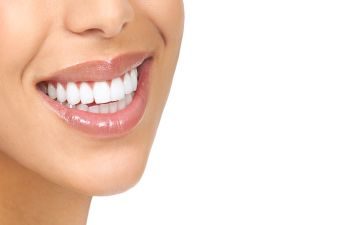
The field of dentistry covers a wide variety of specialties, one of which is cosmetic dentistry. As the name implies, this branch of dentistry has to do with aesthetic aspects. While other disciplines may be included, such as general, restorative or sedation dentistry, cosmetic dentistry procedures are usually electives and are used to enhance the appearance of your smile.
Cosmetic Dentistry Procedures
This special area of dentistry includes various procedures, and some overlap into other areas. The following are considered cosmetic dentistry procedures:
- Dental bonding
- Enamel contouring
- Porcelain veneers
- Porcelain crowns
- Porcelain inlays and onlays
- Teeth whitening
- Smile makeovers
Some dental practitioners may list Invisalign® braces as part of their cosmetic dentistry offerings. This may be due to the fact that Invisalign is often used to straighten mildly crooked or misaligned anterior teeth. You may also see dental implants listed under cosmetic dentistry from time to time.
The Most Common Cosmetic Dentistry Procedure
Across the globe, the most asked-for cosmetic procedure is teeth whitening. Dull, dingy teeth can make you look years beyond your actual age. Even with good oral hygiene practices, over time, your teeth will become noticeably darker. Having your teeth whitened can improve your appearance and make you look years younger with a more vibrant smile.
Your teeth will naturally get darker as you get older. The hard, outer layer of the teeth, called the enamel, gets thinner as you get older. This thinning causes the darker layer beneath, called the dentin, to become exposed. When the dentin shows through, the teeth can look yellowish or grayish.
In addition to the natural darkening of teeth, the foods and beverages you consume also stain your teeth. Dark colored foods and beverages like blue berries and red wine, black tea and coffee will darken your teeth over time. Certain spices, when consumed in quantity and on a regular basis, can also add to the staining.
Foods and beverages are not the only culprits. Cigarette smoking and using other tobacco products will also make your teeth darker over time and produce a buildup of tar on the surface.
Tooth discoloration can also occur as a result of some medications. Tetracycline is known for causing tooth discoloration when used to treat infections during tooth development in children and babies. The tetracycline antibiotic becomes incorporated into the developing tooth structure and causes a translucent gray appearance.
Whitening the teeth is a procedure in which the stains are removed from the outer layer of the teeth. Dentin cannot be whitened. The main ingredient used for the procedure is a peroxide bleaching agent. Professional whitening of teeth in the dental office often produces better results because the whitening agent is stronger than that which you can buy over the counter. OTC products are not as strong and therefore do not provide the same results as a professional whitening.
In some situations, even professional whitening will not make a difference. This can be the case when staining reaches the dentin part of the tooth. It is also common in areas of high natural fluoride or when an individual’s teeth were mottled during development due to treatment with antibiotics. Fortunately, such teeth can also be enhanced with other cosmetic dentistry procedures.
Cosmetic Bonding
One such procedure is cosmetic bonding. This process uses tooth-colored composite material to change the color, shape or size of a tooth. It is also use in repairing cracked or broken teeth when appropriate. The composite material is made from a polymer, glass or ceramic mixture and a bonding agent is used to adhere the material onto the tooth.
Bonding is very effective since the bonding material more or less integrates with the natural tooth material to hold the composite in place. Composites have been used to fill anterior teeth since the 1960s, and now with advancements in technology and dental materials, they are also used to fill posterior cavities. They have the strength and durability to last through the years, and many people are choosing to replace the less appealing silver amalgam fillings with composites for a more natural look.
Although cosmetic bonding is used in certain situations to brighten the look of a discolored tooth or two, sometimes a smile can benefit from a more extensive procedure to produce a bright white smile. When this is the case, porcelain veneers may be suggested.
Porcelain Veneers
Not only will porcelain veneers give your teeth a white, bright look, they also mask other blemishes. These thin porcelain shells are adhered to the front of the teeth within your smile-line; with their translucence, they look as natural as your actual teeth.
Veneers do not correct problems; rather, they mask them. They are used for masking such issues as slightly crooked or misshapen teeth, lengthening teeth that appear too short, closing small gaps between teeth and more. This process only takes one or two visits to produce a beautiful, appealing smile.
Crowns, Inlays and Onlays
A damaged tooth is often left in a weakened state, even after repairs have been made. This applies to a tooth that has been cracked or broken, as well as to the tooth that has had root canal therapy or a large filling. Such teeth can sustain further damage if they are not protected. This is where the dental crown, inlay or onlay is used.
The crown protects the entire tooth above the gumline. As the name suggests, it covers the crown of the tooth, providing strength and stability. Onlays and inlays are smaller restorations that are used when an entire crown is not necessary to restore the full function of a damaged or decayed tooth.
Creating the Perfect Smile
Cosmetic dentistry can help you achieve your best smile. Your dentist will consult with you and after thoroughly examining your teeth, make recommendations on what procedure will produce the smile you desire. In many situations, this is done by providing the patient with general and restorative dentistry procedures as well as cosmetic dentistry solutions.
There are many dentists who are adequately trained in completing cosmetic dentistry procedures; however, when you work with a prosthodontist for your smile makeover, you are receiving the best in expertise and training. The prosthodontist has additional years of training that equips him or her to provide patients with the best in cosmetic procedures.
Prosthodontists have training specific to cosmetic and restorative dentistry. Their training includes the smallest details and nuances that can lead to the best natural look for the patient. These tiny details can be the difference between a really nice smile that looks a little artificial and one that gleams with the WOW factor and looks completely natural.
In addition to general dentistry training, the prosthodontist has extra years of training in restorative and cosmetic dentistry. Their training in restoring missing teeth and addressing maxillofacial issues provides them with the expertise needed to create a superior end result for smile makeovers. Not only does their training include the mechanics of the procedures, it includes training in the small details such as choosing the correct colors for a more natural look, measuring the proportions of facial features and teeth to ensure a balanced look and other nuances that are easily overlooked by dentists without the extra training.
Aesthetic & Implant Dentistry of Atlanta provides patients with the best in cosmetic dentistry because our prosthodontist has the training and experience to help you achieve your desired look. Give us a call today to schedule a consultation and discover the smile that awaits you.



